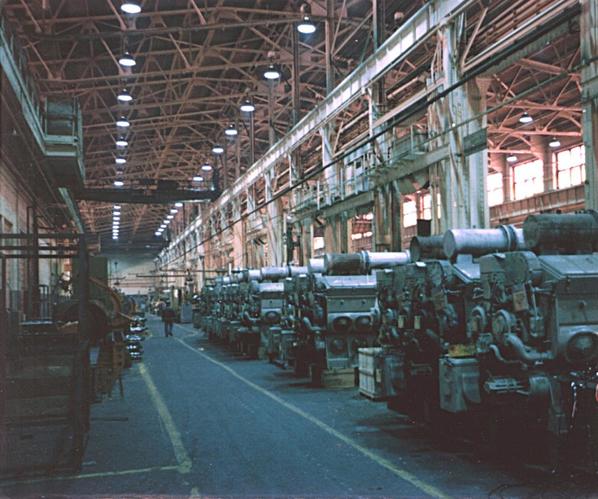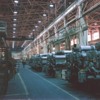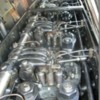I was reading an article about EMD engines and this question resurfaced, something I have wondered about before.
These EMD engines were built with exhaust passages integral to the crankcase, which pass through a water manifold also integral to the crankcase. What is the logic of this? The cooling system gets an extra heat load, and some exhaust heat energy is removed which might otherwise have driven the turbocharger. Of course, turbochargers were a later addition to the 567 engines.
One theory: the 45° "vee" design of the engine cramps the space for the exhaust risers out of the cylinders in the narrow space at the top of the "vee", so they end up sharing space with the water manifold. The engine layout requires that cylinder water jacket and exhaust both discharge from the top of the cylinder assemblies. The fabricated crankcase has a unitized configuration which fully encases the cylinder assemblies and reduces the external connections for air, exhaust and water manifolds.
Another thought: did the early engine designers deliberately intend to cool the exhaust to reduce the risk of fire danger from possible exhaust sparks?
I'm also wondering about the evolution of 567 engines versions A - B - C. As I recall, the A version relied on large O-rings around the cylinder assembly to seal water inlet and outlet passages from the crankcase block to the cylinder. From a mechanical design standpoint it appears to be a tidy arrangement because the cylinder assemblies slide into the block without any external manifolds to connect. In reality, the O-ring surfaces became corroded over time and it became difficult to remove and replace cylinder assemblies into the block because the O-ring sealing surfaces became rough and would damage the O-rings. So the B and C versions of 567 engine were modified to have separate "jumper" and "elbow" connections for the water inlet and outlet to each cylinder assembly. The inlet jumpers were accessed from inside the airbox; the outlet elbows were accessed from the top deck. One of the quirks of EMD engine design was that leaking water connections to a cylinder assembly did not go external; they could go into the airbox plenum or crankcase oil.
The 567A engines were considered less desirable candidates for major rebuilds compared to a 567C. The 645E engines by comparison were considerably refined for easier maintenance and better longevity, as well as increased power per cylinder.
Overall the EMD engines were an extremely successful design. I'm interested to know more about the engine design characteristics and how they evolved.








